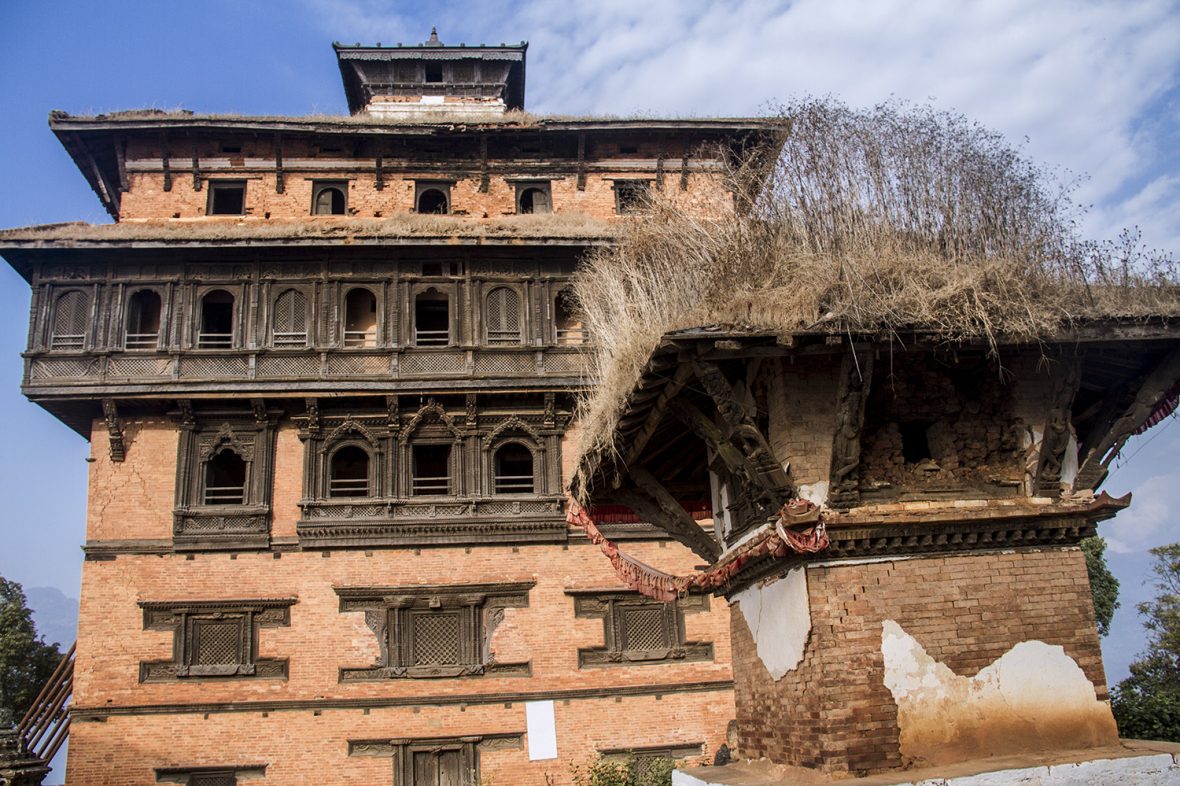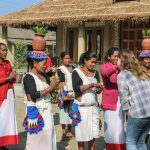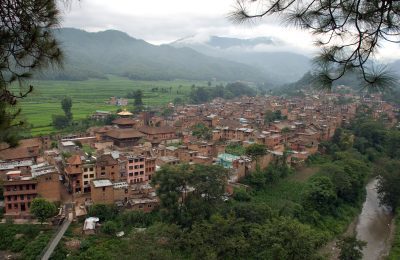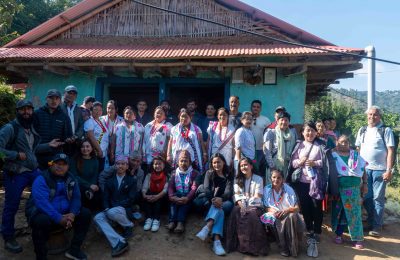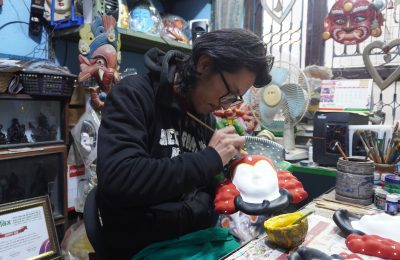Blink and you’ll miss the narrow little turnoff just before Trisuli, on the way to Langtang. About 75 kilometers from Kathmandu, the road winds steeply up to what was once the capital of the Kathmandu Valley before Nepal was unified, Nuwakot.
King Prithvi Narayan Shah, the first king of unified Nepal, built his fine traditional Malla-style palace here in the 18th century. It was situated at an important stopping place on the main trade route between Tibet and the Kathmandu Valley.
At the top of the promontory overlooking Trisuli and the surrounding countryside, the Bhairab Temple clusters with other temples and shrines. UNESCO added the complex to the World Heritage Tentative List in 2008.
History
Until 1744 AD, Nepal was made up of many tiny states. Prithvi Narayan Shah, king of Gorkha state, led the unification of Nepal from Nuwakot. The western access point into the Kathmandu Valley as well as being on the main trade route with Tibet.
King Prithvi Narayan Shah built Nuwakot and eight other forts on hilltops at Belkot, Bhairabkot, Kalikot, Malakot, Dhuwankot, Pyaskot, Simalkot, and Salyankot, forming the ‘Nawakotta’ (nine forts). The name ‘Nuwakot’ is said to have derived from these forts.
The Seven Storey Palace (Saat Tale Darbar) was built by laborers evicted from Lalitpur in 1762. Later in 1793, King Rana Bahadur Shah met the British Representative Mr. William Kirkpatrick. There follows the war between Nepal and China. The town continued as the capital of Nepal until Shahs conquered the Kathmandu Valley six years later.
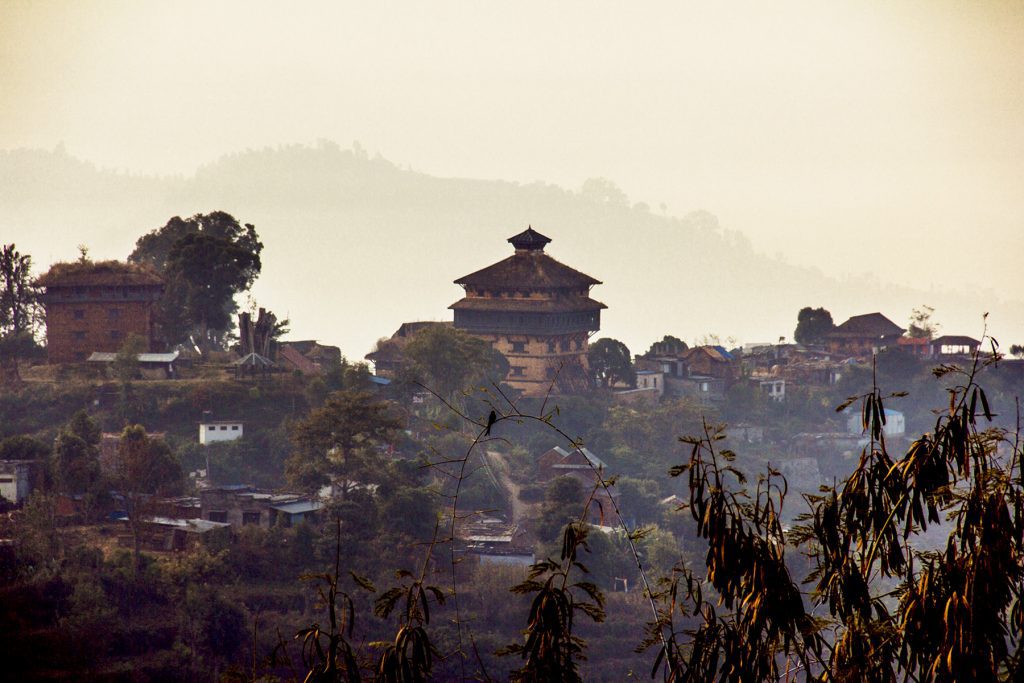
Two other buildings, the Ranga Mahal (a Malla entertainment hall) and Garad Ghar (Tilganga Ghar), flank two sides of the main courtyard as you enter the complex. These are currently occupied by the police and army. A little further in, the Taleju Temple is Durbar Square’s most magnificent temple. Even for Hindus, however, admission is limited to the annual Dashain and Sinduri Jatra festivals.
Timeless Treasures of Nuwakot
Mahendra Malla built this 35-meter-high temple in 1564. The temple predates the palace, and the Malla kings adopted Taleju Bhawani, originally a goddess from the south of India, as their royal goddess from the 14th century.
Nearby, the golden-roofed Bhairab Temple is said to be one of Nepal’s oldest temples and is used for animal sacrifices during the Sinduri Jatra festival. This temple is flanked by a couple of pilgrim rest houses.
South east of the Seven Storey Palace is the brick-built palace called Rangamahal that was built for the three Malla Kings of Kantipur Valley. Several Malla festivals are still celebrated here, including Bhairabi Jatra or Sindure Jatra, Narayan Jatra, Gai Jatra, Shipai Jatra, Devi Jatra, Lakhe dance, Fulpati and Krishna Janmastami.
To visit Nuwakot, direct buses run from Kathmandu three times a day. Taking about 4-5 hours or by car it is about three hours.
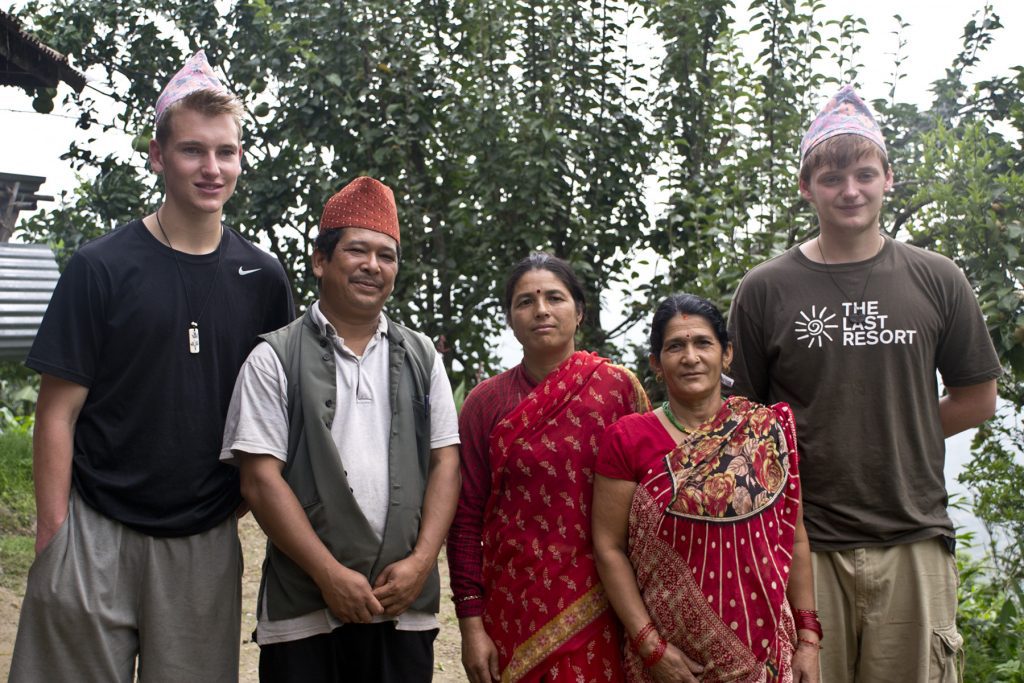
Homestays
Just an hour away before you reach Nuwakot, you might be forgiven for not noticing Belkot. A small farming village that looks across the valley towards Nuwakot and the old palace. With support from Royal Mountain Travel (RMT), twelve homes can now offer a room for guests who want to stay with a family and gain an insight into local life in a typical village.
In less than three hours drive from Kathmandu, you are in a totally different world: clean air, beautiful views of the mountains and the quiet only broken by the cry of a cockerel or sound of school children playing in their break time.
The family houses are typical village homes. One or more rooms in the house are available for guests to stay in. Bedrooms usually have two beds and are furnished simply. Mattresses are authentic – that is quite hard, but all the homes have bathrooms and toilets, even if these are sometimes outside. Meals are cooked in the family kitchen and served to guests in the living room or out on the veranda where they can sit and admire the views of the mountains.
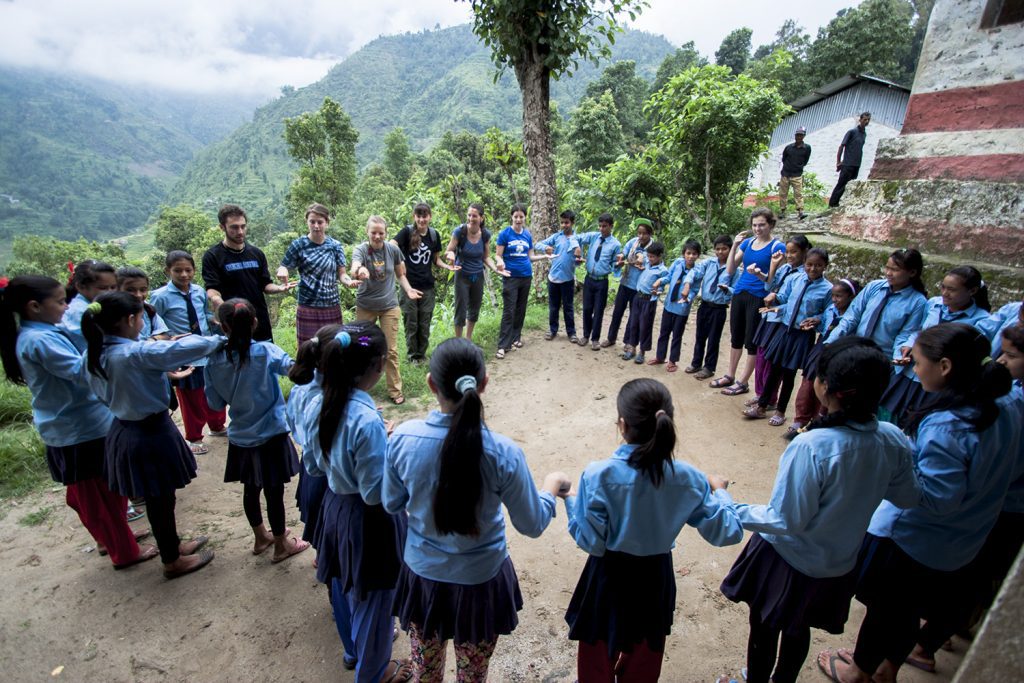
Schools in Nuwakot
Shree Pancha Kanya Higher Secondary School is set back off the road. Just over 500 students coming from the surrounding area study here in classes from nursery up to class 12. The older ‘Intermediate’ or 10+2 students coming to class at 6am. Finishing at 10am, they go home to help their parents at home or in the fields.
Regular classes begin at 10 am, but in the weeks leading up to the crucial March School Leaving Certificate (SLC) exam, class 10 students attend extra classes in Math, English, and Science at 8 am. These are subjects that they often find more difficult and the teachers give extra tuition for a nominal charge.
Family Backgrounds of Children
Most of the children come from a farming background. There are many Tamangs in this area that borders with Tibet in the north. There are also Brahmin, Chhetri, Newar, Magar, and Sunar children at the school.
The government provides 13 teachers, with the local community, external donors (assisted by RMT), funding an additional five for the school’s 17 classes. There are 90 and 64 students in classes 9 and 10, so the classes are divided into two sections. Similarly, there are currently (2015) four classes in classes 11 and 12, with a total of 134 students studying.
A new block, including three classrooms and a library, was recently constructed with support from the local VDC and Room to Read charity. Though the school has 13 computers, only two works. The school has electricity and there are teachers able to teach computing, but the computers are old and need a lot of maintenance. Classes 6 and 7 receive lessons in computing, but only a theory.
Visiting the classes, the students were a delight. As is typical in government schools, there are about 60% girls and 40% boys in all the classes. For the past three years, junior classes are taught all their subjects in English (except Nepali), with the teacher using English and translating into Nepali.
In 2014, an American group of 24 students and teachers visited the school. They have spent a couple of days meeting the Nepalese students, helping to plant rice and gaining an insight into village life.
By: Marianne Heredge


